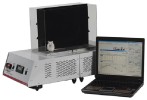Authors
Masaru Sato, Mariko Ito, Masashi Nagase, Yae K Sugimura, Yukari Takahashi, Ayako M Watabe and Fusao Kato
Lab
Department of Neuroscience, Jikei University School of Medicine, Tokyo 105-8461, Japan
Journal
Molecular Brain
Abstract
Background: Pavlovian fear conditioning is a form of learning accomplished by associating a conditioned stimulus (CS) and an unconditioned stimulus (US). While CS–US associations are generally thought to occur in the amygdala, the pathway mediating US signal processing has only been partially identified. The external part of the pontine lateral parabrachial nucleus (elPB) is well situated for providing US nociceptive information to the central amygdala(CeA), which was recently revealed to play a primary role in fear acquisition. Therefore, we manipulated the elPB activity to examine its role in the regulation of fear learning.
Results: First, we transiently inactivate the elPB during the acquisition of fear memory. Mice received bilateral elPB injections of the GABAA agonist muscimol (MUS) or phosphate-buffered saline (drug control), with bilateral misplacement of MUS defined as a placement control group. After the injection, mice were conditioned with a pure tone and foot-shock. On a memory retrieval test on day 2, the freezing ratio was significantly lower in the MUS group compared with that in the drug control or placement control groups. A second retrieval test using a pip tone on day 4 following de novo training on day 3, resulted in significant freezing with no group differences, indicating integrity of fear learning and a temporary limited effect of MUS. Next, we examined whether selectively activating the elPB-CeC pathway is sufficient to induce fear learning when paired with CS. Mice with channelrhodopsin2 (ChR2) expressed in the elPB received a pure tone (CS) in association with optical stimulation in the CeA (CS-LED paired group). On the retrieval test, CS-LED paired mice exhibited significantly higher freezing ratios evoked by CS presentation compared with both control mice receiving optical stimulation immediately after being placed in the shock chamber and exposed to the CS much later (immediate shock group) and those expressing only GFP (GFP control group). These results suggest that selective stimulation of the elPB-CeC pathway substitutes for the US toinduce fear learning.
Conclusions: The elPB activity is necessary and sufficient to trigger fear learning, likely as a part of the pathwaytransmitting aversive signals to the CeA.
BIOSEB Instruments Used:
Thermal Place Preference, 2 Temperatures Choice Nociception Test (BIO-T2CT)

 Douleur - Allodynie/Hyperalgésie Thermique
Douleur - Allodynie/Hyperalgésie Thermique Douleur - Spontanée - Déficit de Posture
Douleur - Spontanée - Déficit de Posture Douleur - Allodynie/Hyperalgésie Mécanique
Douleur - Allodynie/Hyperalgésie Mécanique Apprentissage/Mémoire - Attention - Addiction
Apprentissage/Mémoire - Attention - Addiction Physiologie & Recherche Respiratoire
Physiologie & Recherche Respiratoire
 Douleur
Douleur Système Nerveux Central (SNC)
Système Nerveux Central (SNC)  Neurodégénérescence
Neurodégénérescence Système sensoriel
Système sensoriel Système moteur
Système moteur Troubles de l'humeur
Troubles de l'humeur Autres pathologies
Autres pathologies Système musculaire
Système musculaire Articulations
Articulations Métabolisme
Métabolisme Thématiques transversales
Thématiques transversales Congrès & Meetings
Congrès & Meetings 